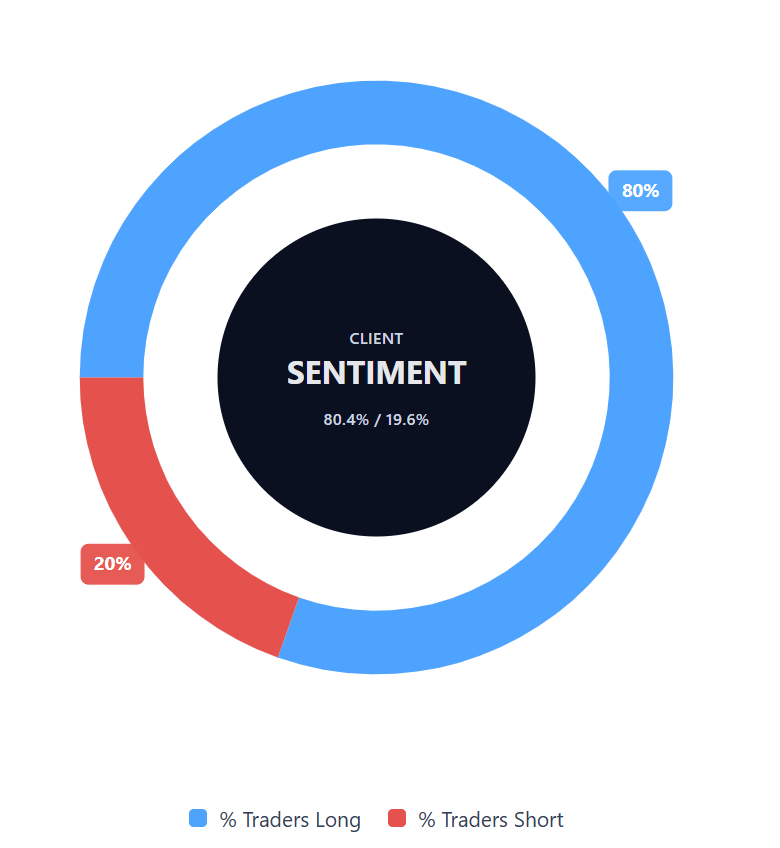Bitcoin price prediction: Third-party outlook
Discover Bitcoin price projections 2025–2030 with third-party BTC forecasts, technical trends, price history, and CFD market sentiment.
Bitcoin (BTC) was trading at $121,360.55 at 6:25pm UTC on 7 October 2025, down from an intraday high of $125,851.60 and just above the day’s low of $121,088.50.
Momentum in technology stocks, driven by AI-related dealmaking, supported broader market sentiment, while a US government shutdown delayed key economic data releases. At the same time, Fed futures continued to price in a high probability of a 25 basis point rate cut later this month (Reuters, 7 October 2025). Past performance is not a reliable indicator of future results.
Bitcoin crypto price predictions: Analyst price target view
Citigroup (base case forecast)
Citi expects Bitcoin to reach approximately $133,000 by the end of 2025, representing an estimated 8.75% upside from current levels. The bank cites continued ETF inflows and increased digital asset allocations by corporate treasuries as factors providing structural demand support (CoinCentral, 4 October 2025).
Standard Chartered (year-end milestone)
Geoffrey Kendrick maintains a $200,000 target for year-end 2025 (as of 2 October 2025), anticipating ETF inflows averaging above $500 million per week. The bank characterises the move as part of a structural uptrend rather than a speculative rally (The Digital Banker, 6 October 2025).
VanEck (cycle-based Bitcoin projection)
The asset manager projects Bitcoin could approach $180,000 in 2025, based on post-halving cycle dynamics and historical performance patterns. The April 2024 halving is viewed as a key event creating supply constraints amid sustained ETF demand (Cointelegraph, 3 October 2025).
Goldman Sachs (conditional scenario)
Goldman Sachs analysts suggest Bitcoin could reach around $220,000 if gold rises to $5,000 per ounce, referencing historical correlations where Bitcoin has tended to gain about 250% for every 15% increase in gold prices amid concerns over Federal Reserve policy independence (CoinCentral, 4 September 2025).
JPMorgan Chase (volatility-adjusted Bitcoin outlook)
JPMorgan strategists led by Nikolaos Panigirtzoglou forecast Bitcoin at around $165,000 in 2025, noting its relative undervaluation compared to gold when adjusted for volatility. The Bitcoin-to-gold ratio has fallen below 2.0, suggesting room for potential alignment (Cointelegraph, 4 October 2025).
Forecasts and third-party projections are inherently uncertain, as they cannot account for unforeseen market developments. Past performance is not a reliable indicator of future results.
BTC price: Technical overview
Bitcoin (BTC) was trading at $121,360.55 at 6:25pm UTC on 7 October 2025. On the daily chart, BTC remains above its key simple moving average (SMA) cluster – 20/50/100/200-day SMAs at approximately 116,236 / 114,112 / 114,929 / 106,094 – with the 20-over-50 alignment still intact. Momentum appears balanced, with the 14-day relative strength index (RSI) around 61 (neutral) and the average directional index (ADX 14) at 30, suggesting an established trend.
A daily close above the classic R2 pivot at 123,799 could bring the 130,000 area back into focus, while initial support lies near the classic pivot point at 113,101, followed by the 100-day SMA around 114,929. A sustained break below the 100-day level may open the way toward the lower pivot zone (TradingView, 7 October 2025).
This analysis is provided for informational purposes only and does not constitute financial advice or a recommendation to buy or sell any instrument.
Bitcoin price history
Bitcoin was launched in January 2009 as the world’s first cryptocurrency, created by the pseudonymous developer Satoshi Nakamoto.
BTC reached its previous all-time high of around $69,000 in November 2021. Over 2022 and 2023, its price was notably influenced by broader macroeconomic factors, including tightening monetary policy by central banks, ongoing regulatory developments in major markets, and market disruptions following several high-profile crypto company collapses. The coin began 2024 at approximately $44,139 and experienced increased volatility, including a decline below $39,000 in late January, followed by a recovery.
Major price movements followed the collapse of Terra Luna in May 2022 and the failure of the FTX exchange in November 2022, which saw Bitcoin fall to lows near $15,500. During 2024, Bitcoin saw a resurgence in institutional interest, particularly after the approval of several spot Bitcoin ETFs in the United States in January – a development widely viewed as a key driver of renewed price momentum. Bitcoin surpassed $73,000 in March 2024, setting a new all-time high.
After a period of consolidation between $60,000 and $70,000 during mid-2024, Bitcoin ended the year near $93,356. The cryptocurrency maintained its upward trajectory into 2025, reaching fresh record levels above $125,000 in early October, supported by ongoing institutional participation and advances in market infrastructure.
As of 8 October 2025, Bitcoin closed at $121,691.55, representing around 30.2% growth since the start of the year and approximately 95.7% year-on-year gains.
Past performance is not a reliable indicator of future results.
Capital.com’s client sentiment for Bitcoin CFDs
Capital.com clients remain predominantly long on Bitcoin CFDs, with 80.4% of positions held by buyers and 19.6% by sellers (7 October 2025). This represents a 60.8 percentage point difference, keeping sentiment firmly in buy-side territory.
This snapshot reflects open positions on the Capital.com platform and is subject to change.

FAQ
Could Bitcoin’s price go up or down?
Like any traded asset, Bitcoin’s price can rise or fall in response to changes in market sentiment, regulatory developments, or shifts in global economic conditions. Technical indicators such as moving averages and momentum measures can help illustrate short-term trends, but they do not predict future outcomes. Market direction ultimately depends on a wide range of factors, and traders should consider volatility and apply appropriate risk management tools and trading strategies before making trading decisions.
Should I invest in Bitcoin?
Capital.com does not provide investment advice. Whether to trade or invest in Bitcoin depends on your financial goals, experience level, and appetite for risk. Bitcoin remains a highly volatile asset, and its price can fluctuate significantly over short timeframes. You can trade Bitcoin CFDs on Capital.com to speculate on both rising and falling prices without owning the underlying asset, though this involves risk of loss. CFDs are traded on margin, and leverage can amplify both profits and losses. It is essential to understand how CFDs work and to assess whether trading them is suitable for your circumstances.
How can I trade Bitcoin on Capital.com?
You can trade Bitcoin CFDs directly on Capital.com’s web platform or mobile app, gaining access to real-time charts, technical indicators, and educational tools designed to support market analysis. Trading CFDs allows you to go long or short on Bitcoin’s price movements, offering flexibility in both upward and downward market conditions. However, it’s essential to use risk management features such as stop loss orders to help manage exposure. Stop-loss orders are not guaranteed, while guaranteed stop-loss orders (GSLOs) incur a fee if activated. Trading is risky. Refer to our PDS and TMD.
What affects Bitcoin’s price the most?
Bitcoin’s price is shaped by supply-and-demand dynamics, macroeconomic data, and regulatory changes. Key influences include ETF inflows, mining activity, and movements in correlated markets such as gold or technology stocks. Broader market sentiment also reacts to global events, interest rate expectations, and liquidity conditions, which can amplify volatility. As with all financial assets, these factors can combine in complex ways, leading to both short- and long-term price fluctuations.